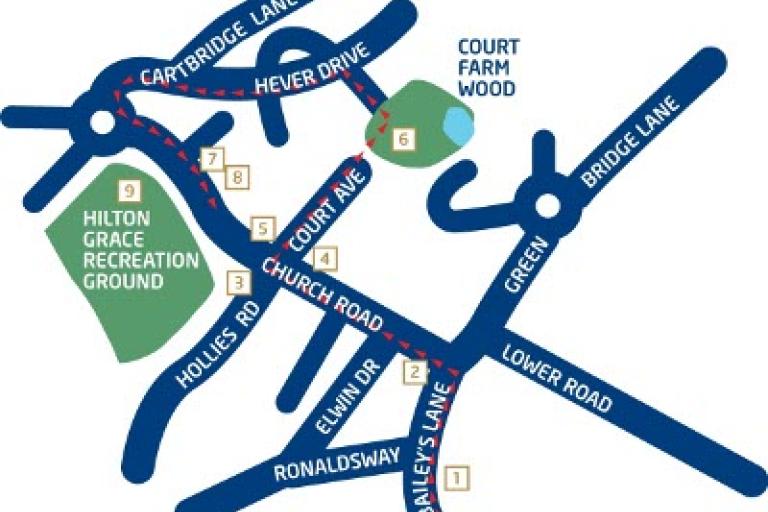Halewood
Before the Industrial Revolution, Halewood changed little over the centuries. In the 1700s, it had a cottage industry of weaving, four tool and parts makers, two tanneries and two alehouses, the Cock and Trumpet and the Eagle and Child. The area remained predominantly rural until the mid-19th century and the introduction of the railway. From the mid-1950s onwards, large housing estates, including tower blocks, were built, and the population had increased ten-fold by the 1970s. In 1963, the Ford Motor Company came to Halewood, and production began with the Ford Anglia; the first car off the production line was preserved at Liverpool Museum.
Halewood also boasts a pet cemetery on Higher Road with over 560 graves. One of the earliest dates is from 1922 and commemorates a cat called ‘Bonar’. The largest grave is for ‘Blackie’, a horse who served in the Royal Artillery during the First World War.

The route:
- The first railway station in Halewood opened in May 1874 and was situated on Bailey's Lane. It was reached by a ramp close to the Derby Arms. The opening of the railway gave local residents not only the opportunity to travel but also a wider choice of occupations other than farming. The old station closed in the 1950s, but the cottages built for the early railway workers can still be seen.
- The Derby Arms public house we see today was built in the 1930s, but the original was built over 100 years ago. There was a field at the back of the pub that served as a venue for celebrations such as Empire Day and for days out by parties of children from Liverpool coming to enjoy the countryside.
- Hollies Cottage has had a variety of uses. It was formerly a blacksmith and a private school run by Miss Hilton and Miss Hancock. They were the aunts of William Grace, who ran Court Farm. The school was attended by the children of wealthy parents who would take their children to school in a pony and trap. At one time, there was also a weighbridge situated here.
- The Eagle and Child, built around 1750, is believed to be one of the oldest buildings in the village. It has been greatly altered, but some of the original building remains. The Crosby family ran the pub for many years and also ran the adjacent blacksmiths and coffin makers.
- These four late C19 black and white Tudor-style cottages retain much of their original character. Number 1 was once the home of Misses Alice and Lizzie Jump, former teachers in Halewood.
- Court Farm Wood is a public green space occupying the former site of Court Farm. Of interest is the pond and old wall. Follow the footpath sign for Cartbridge Lane.
- St. Nicholas Church was built from sandstone from Woolton and Huyton quarries and opened in 1839. It is Grade II listed in the Gothic style with 21 stained glass windows, 17 of which were designed by William Morris. The church was altered in 1841, and the tower with bells was added in 1883. The churchyard contains the graves of many notable people, including William Imrie of the White Star Shipping Line, owners of the Titanic. The rectory at the back of the church has a late Georgian frontage with its original patterned windows.
- In 1842 St. Nicholas Church school was opened for £300 on land given by Lord Derby. In 1847, a second school was built so boys and girls could be taught separately. Originally lit by candles, then paraffin lamps, it wasn’t until the 1920s that they were wired up for electricity. The school closed in 1989 and was converted to residential properties. A former pupil was John Hilton Grace, born on 21st May 1873. After going to Cambridge University to study mathematics, he found fame as a mathematician. He died in 1953 and is buried in the family grave at St. Nicholas Church.
- The land for the Hilton Grace Recreation Ground was donated by William H Grace, who ran Court Farm in memory of his youngest brother, who died in a punting accident in Surrey.